We’re back on my Single Map today with another country walk and we’re going from Fiddleford to Piddles Wood.
One of Dorset’s most endearing qualities is the ridiculousness of some of its names. A few years ago that spawned a quiz called Dorset Village or NFL Player? and I particularly enjoyed that one of the NFL players shared his name with a friend of mine who isn’t himself a Dorset village but used to live in one. (The name is so odd that they’re Facebook friends.) The prize probably goes to Shitterton, decorously pronounced as if the H isn’t there, whose road sign is now a massive block of limestone because the metal plate variety kept getting stolen but Fiddleford and Piddles Wood are pretty good.
Fiddleford comes from the name of a landowner at some pre-Domesday time, Fitela and the for the fact that there was a ford in the river. Fitela’s Ford became Fitelford became Fiddleford.
As for Piddles Wood, Dorset does have an abundance of towns and villages that take their name from the River Piddle – you may have heard of the Tolpuddle Martyrs. When Queen Victoria came to visit the county, lots of Piddles became Puddles to spare her blushes, so the story goes. Piddles Wood, however, doesn’t seem to have any connection with the River Piddle, which doesn’t flow through this area. Instead, it sits next to the Stour.
Ah, bless the Stour. We tried to do this walk in January but were scuppered by the river not staying in its banks. We already suspected it wasn’t going to go well and when the first field had vanished underwater, we had to go to Plan B (try to do it backwards starting with the woods) and then to Plan C (just walk the trailway again). But today it had all dried out!
Download the GPX track here at my Wikiloc page.

We parked in the free car park at Fiddleford Manor. I’m looking forward to the world opening up again – isn’t everybody? – in particular because I’m interested to see Fiddleford Manor, which is whatever remains of a medieval hall. I like medieval things, although I like Saxon things a little more. I think there’s more of the manor house surviving and intact than I’d previously imagined but I also think it’s smaller than I’d previously imagined. When it’s safe to go out and do things other than walk, I’ll do a blog about it. We wouldn’t see it today but once we’d been through the farm, following the trail down a bit of road that looked thoroughly private, we reached Fiddleford Mill. There are quite a few mills along the next few miles of the Stour, none of them working anymore, or at least not seriously. Fiddleford is now a very small-scale hydro power station, the current turning a submerged screw to generate 176mw/year, enough to power 35 “typical houses”.
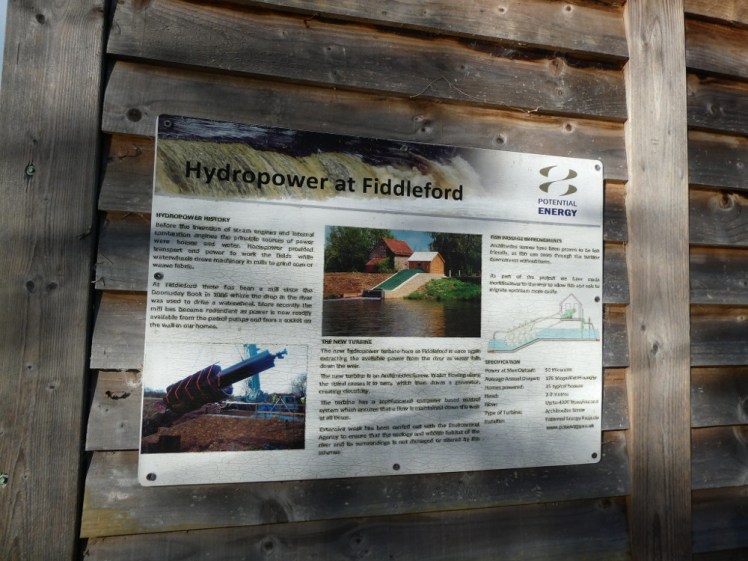

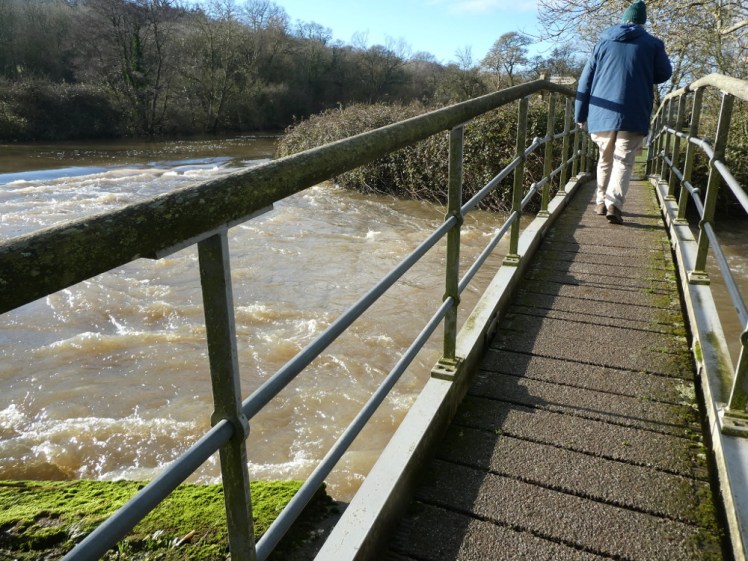
The water mill workings are still here, all the gates and weirs and bridges. On our aborted January attempt, the water came up to mere inches below our feet. Today it was all much lower and calmer, revealing a stepped weir that I can only conclude is meant to work as a ”ladder” for helping the fish get up and down stream.

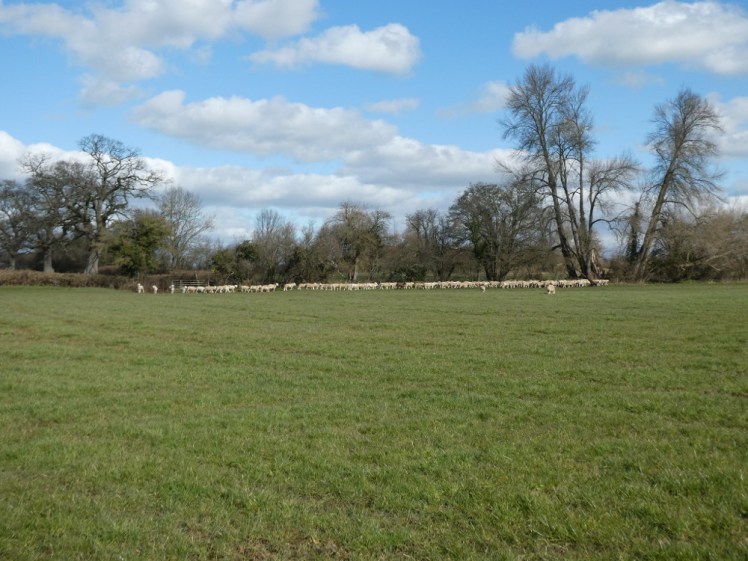
The next leg was the aforementioned field. It was a bit squelchy in places but definitely more passable than last time. There’s a public footpath across to the outskirts of Sturminster Newton but obviously it’s difficult to figure out exactly how you’re meant to cross the field. Gates gave us clues to where we were supposed to end up and we mostly skirted around the outside – oddly, the ground was drier and firmer nearer to the riverbank. We passed sheep but otherwise the field was uneventful.
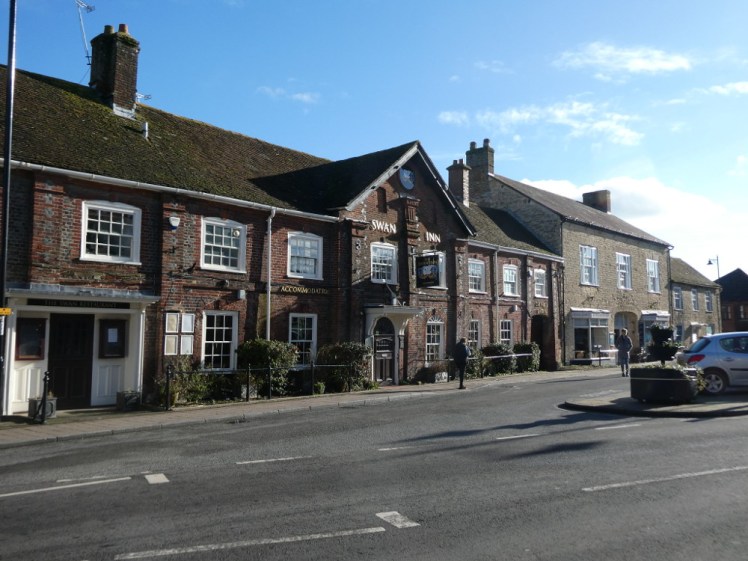
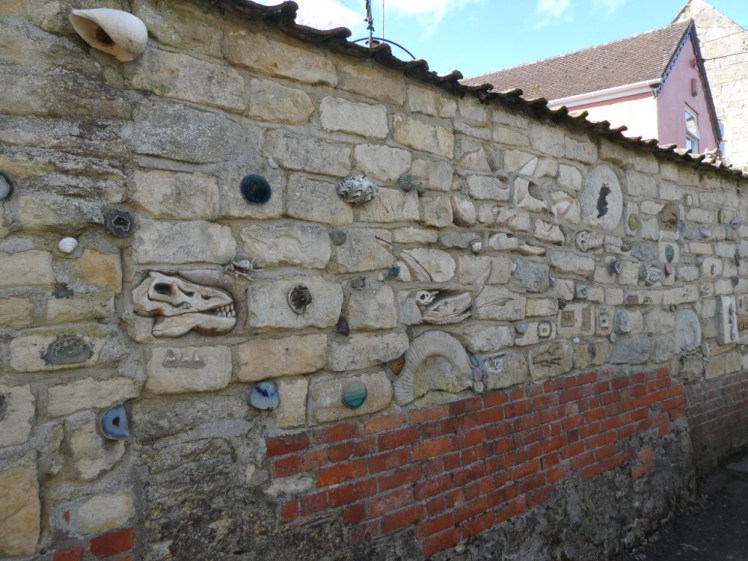
At the other end was a farm and then we were in the back streets of Sturminster Newton. This is a town of contrasts. From Town Bridge to the Marketplace, it’s a quaint old-fashioned village, all cottages and markets and country pubs and then suddenly it turns into a modern town, which provides the amenities the locals need but utterly lacks the quaint rural character. We weren’t going that way. We made our way down the back lanes, past a terrace of yellow cottages which all had handmade mosaic name plates instead of numbers, down what they call the old coach lane – far too narrow even for a horse, let alone a coach – and emerged by Town Bridge.
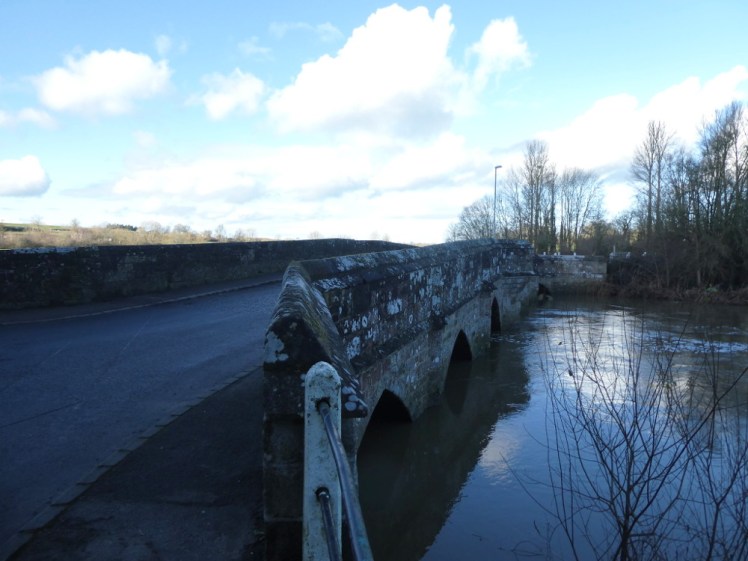

Dorset has plenty of these narrow old stone bridges and Stur’s is one of those with a plaque warning that you’ll be transported to Australia if you damage it. Honestly, at this stage of the pandemic you start to wonder if that’s a promise. Then we crossed the busy main road, climbed up behind what appears to be a converted chapel and onto an open hill. To the left, in someone’s garden, is an Iron Age hillfort. It’s not the biggest in the area – giants Hod Hill and Hambledon Hill are both within an hour’s walk back down the trailway – but nonetheless, there’s a hillfort just hiding away behind a fence.


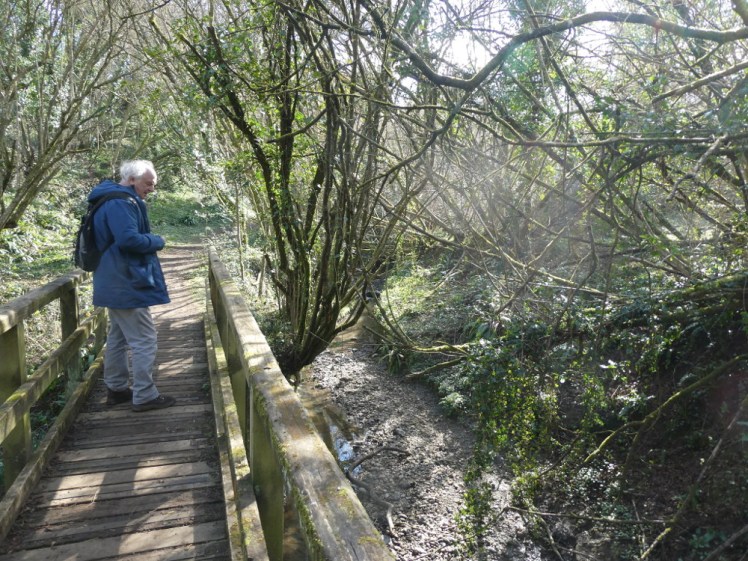
We investigated the next leg on our failed attempt in January. You skirt along the edge of the woods and then you go briefly into the woods before emerging at roof level of a very pretty little cottage and then dive down into the woods again, slightly muddier and slightly wilder. Then we had a bit of a trek up to Broad Oak, which is a village hiding away down the lane, and up to Piddle Woods at last. What we didn’t know is that it has its own car park and Dad was delighted to find there was a bench right outside. We bring a picnic – cheese sandwiches and drinks and so on, nothing fancy – and he always likes to find a bench to sit on to eat it.
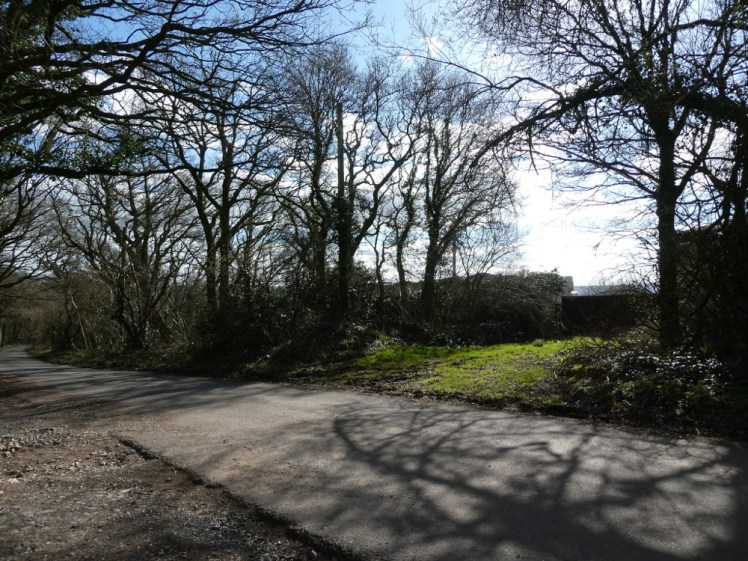


Back in January, we’d decided not to even investigate the woods. Dad thought it would be so muddy it would be impassable – his boots have marginally less grip than bowling shoes and he hates anything that’s not actually solid ground – but it turns out it’s absolutely fine. There are light gravelly paths criss-crossing the woods which means it’s good underfoot and you know that you’re not going to get too lost. I was heading for the middle of the three paths that emerge along the northern edge of the woods, which comes out more or less opposite the road back to the car park but Dad’s plan was to take the north-eastern path which comes out at the other end of Fiddleford.

We popped out of the woods at the top of a grassy slope that led down to a big house with its own tennis courts. It looks most odd to see people playing tennis in lockdown but I suppose you would if you had the sort of house that has tennis courts and a barn big enough to store vintage buses in, which is how my dad judges barns and sheds. At the bottom of the track, we emerged on the main road and now we had about a hundred metres along the side of the main road with no pavement and a 60mph speed limit before we could take shelter in the small road that goes into the village. It’s right at the Fiddleford Inn, which is obviously closed at the moment but I’ll definitely be coming here and sitting out in the pub garden when things open up again. I’ve seen a lot of closed country pubs in the last few months and while I wouldn’t have taken much interest a year or two ago, I think a pub garden in the summer in a small village would be wonderful in the summer.
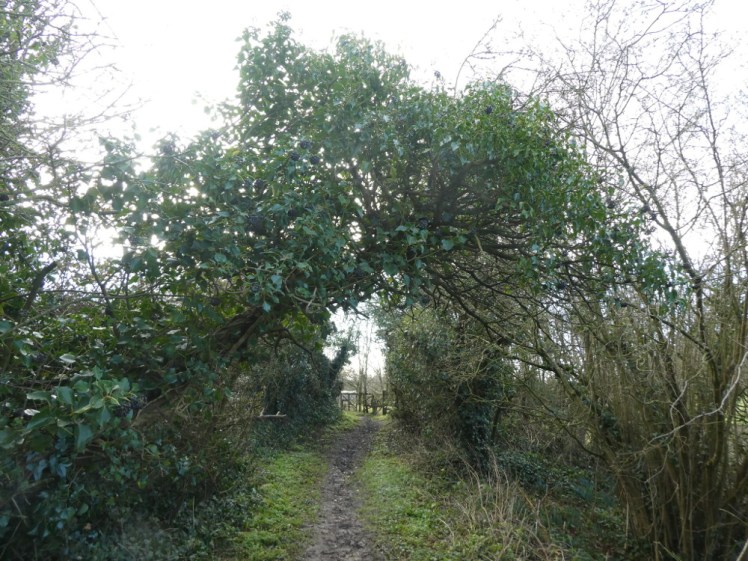
The last bit was to take the narrow lane down the back of Fiddleford rather than the single track country road. I know what it’s like driving down this sort of thing and if a car comes round that corner, they’re not going to know we’re there until they’ve hit us and we’re not going to have any way to escape it. So the narrow lane. It goes down the side of a smallholding, with sheep and geese in the garden and then it trundles down through the woods, next to a stream on the left and everyone’s back gates on the right and pops out a hundred metres from the turning to the car park. Now, we had a slight hiccup here. There was a tractor spreading in the field on the other side of the road, and if you’ve never experienced a tractor spreading, suffice it to say that it stinks to high heaven. And we’d barely gone ten steps down the road before it began its long and awkward turn out of the field and onto the road. I did what sensible people do: I climbed onto the verge and waited for it, forgetting it’s a tractor and that we could have ambled down the road to the car and been halfway home before getting anywhere near needing to get out of its way. But we waited and we waited because it’s only sensible to get out of the way of tractors and then of course, we had to follow it for a minute or two. That was where I thought we’d made the big mistake but actually, when it’s not actively spreading, it doesn’t smell so bad. I mean, it’s still hardly perfume and roses but I was expecting to not be able to breathe. That’s the thing about the countryside, the real countryside, the one people actually live and work in, it’s not all about views and “being in nature” and peace and tranquillity, it’s full of livestock and heavy machinery and manure and occasionally you find yourself walking up a lane behind a tractor to get back to the car.
One thought on “A Single Map: Fiddleford to Piddles Wood”